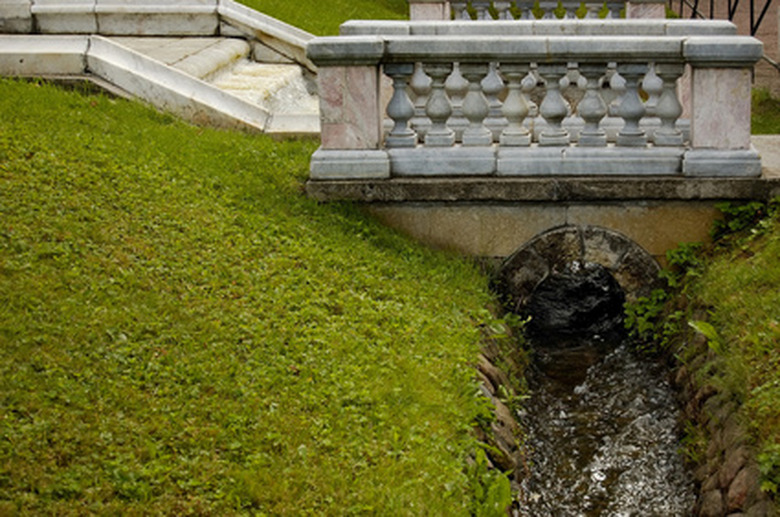How To Calculate The Drainage Area
Drainage area is an alternate term for drainage basin. In simplest terms, it is an area of land where water from natural sources, such as melting snow or rain or melting ice, pool and join another existing body of water, such as a river or lake. In the field of hydrology, calculating drainage area is a critical element in many practical applications. In determining the peak runoff of watersheds, the drainage area is needed. Calculating drainage density or calculating storm drainage for secondary roads begins with the drainage area. This concept reaches into many fields of engineering.
Step 1
Acquire United States Geological Survey (USGS) topographic maps at 1:24,000 scale that cover the drainage network of interest.
Step 2
Trace the drainage area of interest on the topographic map.
Step 3
- Acquire United States Geological Survey (USGS) topographic maps at 1:24,000 scale that cover the drainage network of interest.
- Trace the drainage area of interest on the topographic map.
Step 4
Outline the drainage area with a polar planimeter by moving the tracer point along the previously traced area.
Step 5
Record the enclosed area in Vernier units.
Step 6
Convert the Vernier units to the desired area measurement based on scale of map and conversions provided with the planimeter.
Approach II
Step 1
Acquire United States Geological Survey (USGS) topographic maps at 1:24,000 scale that cover the drainage network of interest.
Step 2
Trace the drainage area of interest on the topographic map.
Step 3
- Acquire United States Geological Survey (USGS) topographic maps at 1:24,000 scale that cover the drainage network of interest.
- Trace the drainage area of interest on the topographic map.
Step 4
Digitize the drainage area into a Geographic Information System (GIS) file using the GIS unit and the add-on digitizer.
Step 5
Compute the drainage area using the accompanying software from USGS.
Approach III
Step 1
Acquire United States Geological Survey (USGS) topographic maps at 1:24,000 scale that cover the drainage network of interest, and trace the drainage area of interest on the topographic map.
Step 2
Place a sheet of 100 dot-per-square-inch transparent overlay on top of the drainage area on the USGS map.
Step 3
Count the total number of dots falling within the drainage area and half of the dots falling on the lines.
Step 4
Find the correct conversion factor, noting map scale. For a 1:24,000 scale, the correct per dot area conversion factor is 0.003889 kilometers (km) squared.
Step 5
- Digitize the drainage area into a Geographic Information System (GIS) file using the GIS unit and the add-on digitizer.
- Place a sheet of 100 dot-per-square-inch transparent overlay on top of the drainage area on the USGS map.
Step 6
Calculate drainage area by multiplying the total number of dots by the conversion factor.
